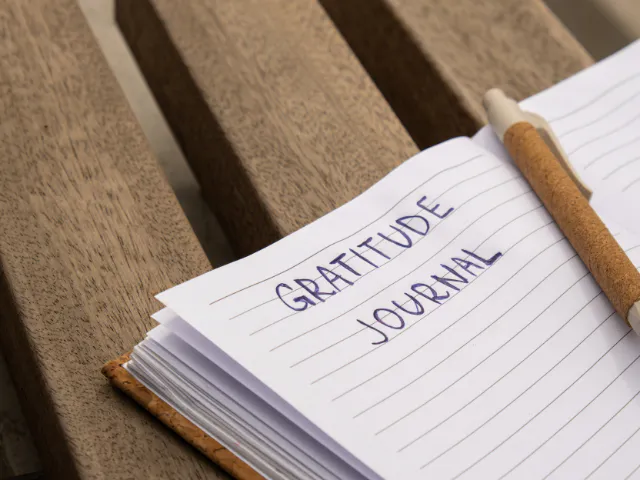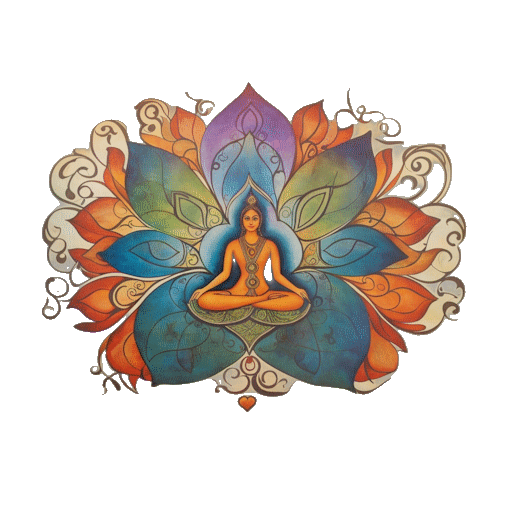The art of journaling has long been celebrated as a pathway to self-discovery and emotional catharsis. But when this practice is combined with the ancient wisdom of prana, it becomes more than just an exercise in writing—it evolves into a profound form of journal therapy.
The Essence of Keeping A Journal
Historical Roots of Journaling

Journaling, as a practice, traces its roots back to ancient civilizations. From the reflective writings of Roman Emperor Marcus Aurelius to the detailed diaries of medieval monks, the act of putting thoughts to paper has been a cherished human tradition. These historical accounts not only served as personal introspections but also provided valuable insights into the cultures and times they were written.
The Evolution of Journaling
Over the centuries, journaling has evolved, adapting to societal changes and technological advancements. From quill and parchment to digital apps, the mediums have changed, but the core essence remains the same. Today, keeping a journal is not just a record of daily events but a tool for self-exploration, personal growth, and therapeutic healing.
Journal Therapy: A Modern Take on an Ancient Practice
In the realm of modern psychology, the therapeutic benefits of keeping a journal have been recognized and harnessed. Coined as “journal therapy,” this practice involves using diary as a medium for self-reflection, emotional processing, and personal development. Guided by therapists or done independently, journal therapy taps into the cathartic power of expression, helping individuals confront and process complex emotions.
The Personal and Collective Benefits
While journaling offers profound personal benefits, such as clarity, emotional release, and self-awareness, it also serves a collective purpose. Journals, diaries, and personal writings have often been used as historical documents, providing future generations with a window into the past. They capture the zeitgeist of an era, the personal struggles, joys, and the mundane details that paint a vivid picture of life during that time.
The Connection Between Journaling and the Flow of Prana
Expression as a Channel for Energy

At its core, it’s an act of expression. As individuals articulate their thoughts, feelings, and experiences on paper, they release pent-up emotions and mental clutter. This release can be likened to clearing blockages in a river, allowing prana, the vital life force, to flow more freely and energetically within.
Creating Space for Prana
Every word written, every emotion articulated, and every reflection made creates space within the individual. This space, free from the weight of unexpressed emotions or unresolved thoughts, becomes a conduit for prana. The clearer the internal pathways, the more harmoniously prana can circulate, enhancing vitality and well-being.
Synchronization of Breath and Thought
While writing, there’s an unconscious synchronization of breath with the rhythm of writing. This rhythmic breathing, even if unintentional, aligns with the principles of pranayama, where regulated breath influences the flow of prana. As one writes and breathes, there’s a subtle dance between thought, expression, and life energy.
Mindfulness, Presence, and Prana
Journaling demands presence. Being in the moment, fully engaged with one’s thoughts, and translating them into words is a form of mindfulness. This heightened state of awareness, combined with the act of writing, can amplify the connection to one’s inner prana, making the experience both therapeutic and energizing.
Vintage Leather Journal for Men & Women, 240 Pages
Lined Notebook Journal for Men Women – 368 Pages A4
Journaling as a Tool for Well-being
Self-awareness and Personal Growth

Keeping a journal offers a mirror to one’s soul. By consistently writing down thoughts, feelings, and experiences, individuals gain deeper insights into their behaviors, patterns, and triggers. This heightened self-awareness can lead to personal growth, as one becomes more attuned to their needs, desires, and areas of improvement.
Emotional Catharsis and Healing
The act of writing can be therapeutic. Pouring emotions onto paper, especially those that are challenging or overwhelming, provides a form of release. This cathartic process can aid in emotional healing, allowing individuals to process and move past traumas, grief, or anxieties.
Clarifying Thoughts and Decision Making
Often, the mind can be a whirlwind of thoughts. Journaling serves as a tool to declutter the mind, helping individuals organize their thoughts and gain clarity. This clarity can be instrumental in decision-making, offering a structured way to weigh pros and cons and arrive at informed choices.
Setting Intentions and Manifesting Goals
Journaling isn’t just about reflecting on the past; it’s also a powerful tool for envisioning the future. By writing down intentions, aspirations, and goals, individuals give form to their desires. This act of manifestation, combined with the positive energy of prana, can set the stage for actualizing these visions.
Building Resilience and Coping Skills
Regular journal writing can build resilience. By documenting challenges and the strategies used to overcome them, individuals create a repository of coping mechanisms. Over time, this journal becomes a testament to their strength and resilience, serving as a source of inspiration during tough times.
Techniques and Approaches in Journal Therapy
Guided Journaling
This approach involves specific prompts or questions designed to guide the writer toward introspection and self-discovery. These prompts can range from simple questions like “What made you smile today?” to deeper inquiries like “What’s holding you back in life?”
Free Writing
Also known as stream-of-consciousness writing, this technique encourages individuals to write whatever comes to mind without any filters or judgments. It’s a way to let the subconscious mind express itself, often leading to surprising insights and revelations.
Reflective Journaling
Here, individuals are encouraged to revisit past entries and reflect on them. This method allows for the recognition of patterns, growth, and changes over time. It’s a way to see one’s evolution and the impact of certain events or decisions.

Keeping a Gratitude Journal
Focusing on the positive, this approach involves listing things one is thankful for. By regularly acknowledging and appreciating the good in life, individuals can cultivate a more positive mindset and enhance their overall well-being.
Dream Journaling
Recording and analyzing dreams can offer insights into one’s subconscious mind. This technique can help individuals understand their fears, desires, and aspirations, often leading to profound self-awareness.
Art Journaling
Combining visual elements with written words, art journaling allows for a multi-sensory expression. Drawing, painting, or collaging can complement the written content, offering a holistic approach to self-expression.
Integrating Prana and Journal Keeping
Breath Awareness During Journaling
While writing, being conscious of one’s breath can enhance the experience. Taking deep, rhythmic breaths can help in channeling thoughts more clearly and can also aid in emotional release. This conscious breathing aligns with the principles of pranayama, ensuring a harmonious flow of prana as one writes.
Visualization Techniques
As one journals, visualizing the flow of prana can be beneficial. Imagining this life force energy moving through the body, especially the hands as they write, can amplify the connection between thought, expression, and energy. This visualization can make the act of writing more potent and therapeutic.
Setting Intentions with Prana in Mind
Before beginning a writing session, setting an intention that aligns with one’s inner prana can be powerful. Whether it’s seeking clarity, healing, or simply expressing gratitude, aligning this intention with the life force energy can make the session more impactful.
Post Meditation or Breathwork
After a meditation or breathwork session, when one’s awareness of prana is heightened, journaling can capture the essence of the experience. Writing during this state of heightened awareness can lead to profound insights and reflections.
Creating a Sacred Space for Writing
The environment in which one journal can influence the flow of prana. Creating a calm, serene space, perhaps with candles, incense, or soothing music, can enhance the connection to prana. This sacred space can make the experience more immersive and spiritually enriching.
Getting Started with Journaling
Choosing the Right Medium
While many prefer the tactile experience of writing in a physical journal, others might opt for digital platforms or apps. Here are some recommended apps:

| App Name | Key Features | Platform |
|---|---|---|
| Journey | Attach images/videos, Touch ID/Face ID/PIN protection, Google Drive backups | iOS, Android, macOS, Linux |
| Penzu | High security, customizable features, insert images | iOS, Android |
| Day One | Multiple journals, dark mode, IFTTT integration | iOS, Android, macOS |
| Daylio | Journal without writing, mood/activity selection, add notes | iOS, Android |
| Grid Diary | Grid-style templates, prompts, personalize entries | iOS |
Creating a Routine
Consistency can enhance the benefits of journaling. Setting aside a specific time each day, whether it’s in the morning to set intentions or at night to reflect, can help in building a habit.
Overcoming the Fear of the Blank Page
Many beginners face the daunting sight of an empty page. Starting with simple prompts or questions can guide the writing process. Over time, as comfort grows, one can venture into more free-form journaling.
Maintaining Privacy
For many, this is a deeply personal activity. Ensuring that the journal is kept in a private, secure place can encourage more honest and open expression without the fear of judgment.
Vintage Leather Journal for Men & Women, 240 Pages
Lined Notebook Journal for Men Women – 368 Pages A4
Conclusion: Embracing the Journey
Journaling, whether viewed as a simple act of recording daily events or a profound tool for self-reflection and growth, holds immense power. By intertwining the practice with the understanding of prana, one can tap into deeper layers of consciousness, promoting holistic well-being.
The act of putting pen to paper, or fingers to keys, allows for a unique connection between the mind and the external world. It’s a bridge between our innermost thoughts and the tangible realm, offering clarity, release, and insight.
Incorporating techniques from journal therapy, being mindful of the flow of prana, and choosing the right tools and platforms can enhance the journaling experience. As you embark on this journey, remember that it’s not about perfection but about expression. It’s about finding your voice, understanding your essence, and allowing the life force of prana to guide you toward greater well-being.
We encourage you to pick up that journal, start writing, and discover the transformative potential that lies within.
FAQ
What is prana and how is it related to journaling?
Prana is an ancient concept that refers to the vital life force or energy present in all living beings. When it comes to journaling, the act of writing can help regulate and harmonize the flow of prana, leading to enhanced well-being and self-awareness.
How can journaling improve my well-being?
Journaling offers a platform for self-reflection, emotional release, and clarity of thought. By articulating feelings and experiences, you can achieve emotional catharsis, better decision-making, and heightened self-awareness, all of which contribute to improved well-being.
Are there specific journaling techniques that focus on prana?
Yes, techniques like breath awareness during journaling, visualization of prana flow, and setting intentions with prana in mind can enhance the connection between journaling and the life force energy.
I’m new to journaling. How do I start?
Begin by choosing a medium that feels right for you, be it a physical journal or a digital app. Set aside dedicated time each day to write, and if facing the blank page feels daunting, start with simple prompts. Over time, as you become more comfortable, you can explore deeper introspective techniques.
Can journaling replace meditation or other mindfulness practices?
While journaling offers its unique benefits, it’s not a replacement for meditation or other mindfulness practices. Instead, it can complement these practices, providing a platform to articulate and process the insights gained during meditation.
How often should I journal for optimal benefits?
There’s no one-size-fits-all answer. Some people benefit from daily journaling, while others might prefer a few times a week. The key is consistency and finding a rhythm that aligns with your needs and lifestyle.





